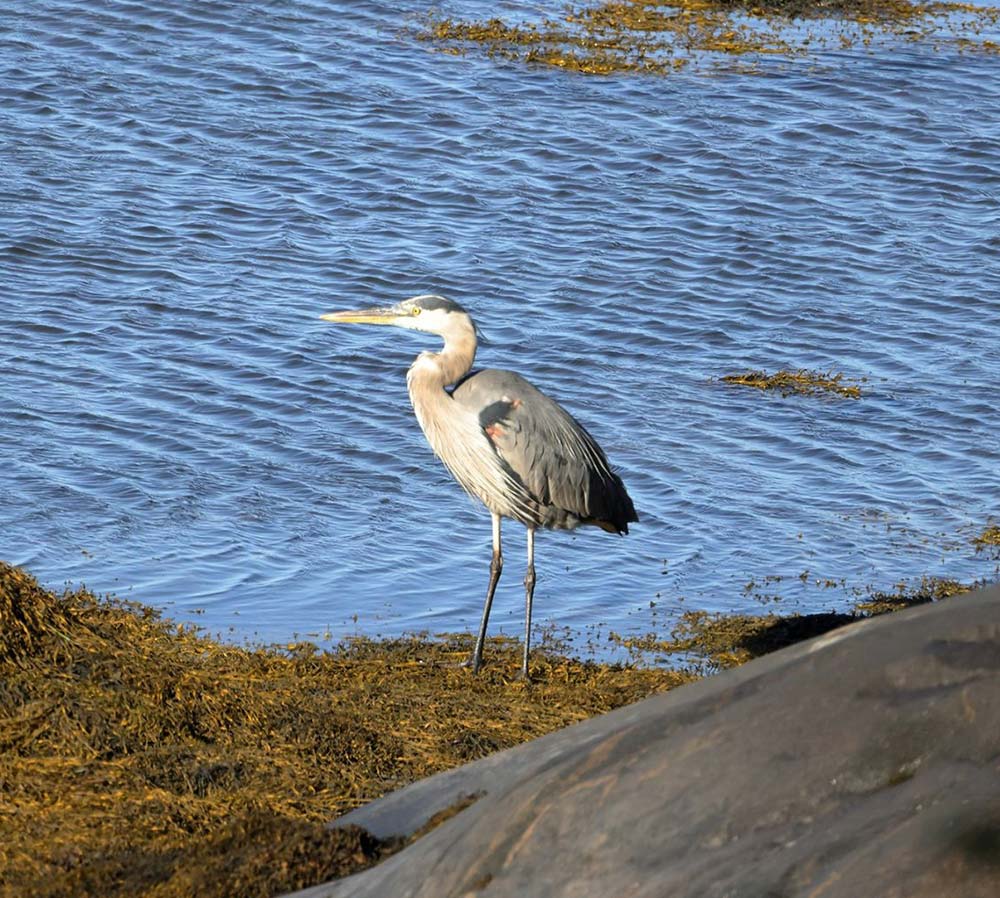Environmental Observatory
for the bay of Sept Îles
In 2013 Ville de Sept-Îles, the Port of Sept-Îles and their partners established the Environmental Observatory for the bay of Sept Îles, an innovative approach to characterizing the bay ecosystem representing investments of some $1.2 million. The goal of the large-scale study, locally led by the Northern Institute for Research in Environment and Occupational Health and Safety (INREST), was to provide a broader understanding of the bay and a better grasp of the impact of human activity on its shores.

Final report
On December 3, 2018, after 4 years of research by a multidisciplinary team of more than 40 environmental experts, the Environmental Observatory for the bay of Sept Îles released its final report. The findings allow the Port to better understand the impact of our activities and adapt our practices accordingly.

General findings
Excerpts from the Observatory’s final report
Overall water quality for the bay of Sept Îles (determined using 2 water quality indices) is classified as B (i.e., water of satisfactory quality that is suitable for most uses, with concentrations that rarely deviate from natural or desirable levels).
For sediment quality (determined based on the criteria in effect at the time of writing for sediments with a different geology than that of the study area), assessments of the samples collected ranged from “no action required” to “avoid the presence of new sources of contamination” at some sampling stations. The highest values (for specific parameters) were observed primarily in industrial sectors. This was to be expected given that industrial operations have been running at or near these sampling sites for over 65 years. Criteria that take into account local geological signatures need to be developed.
In conclusion, the overall quality of the environment is good based on the team’s knowledge at the time this report was written combined with the portrait of the benthic community; the characterization of eelgrass beds; the overview of the macroalgae community in the subtidal zone; the marine mammal survey and monitoring program; the survey of fish, seabirds, crustaceans and other species; and the results from the water and sediment quality studies.
However, to maintain environmental and ecosystem quality going forward, it will be crucial for managers, leaders, government representatives and the broader community to draw on this report, particularly its recommendations, in order to implement a sustainable development approach that preserves and protects the bay of Sept Îles for future generations.
Nous veillons sur notre baie
Liste des projets qui touchent de près la baie des Sept Îles
Lorem ipsum dolor sit amet, consectetur adipiscing elit. Integer non malesuada lorem. Nam dolor felis, egestas et lacus ac, malesuada congue nisl. In bibendum a urna et pulvinar. Duis a pulvinar ligula. Duis efficitur viverra justo in lobortis.
Lorem ipsum dolor sit amet, consectetur adipiscing elit. Integer non malesuada lorem. Nam dolor felis, egestas et lacus ac, malesuada congue nisl. In bibendum a urna et pulvinar. Duis a pulvinar ligula. Duis efficitur viverra justo in lobortis.
Lorem ipsum dolor sit amet, consectetur adipiscing elit. Integer non malesuada lorem. Nam dolor felis, egestas et lacus ac, malesuada congue nisl. In bibendum a urna et pulvinar. Duis a pulvinar ligula. Duis efficitur viverra justo in lobortis.
Your cruise on this page ends here.
Choose a new destination!
The Port of Sept-Îles’s Environmental Policy is a formal commitment to abide by 5 key environmental principles.
The Port of Sept-Îles is a founding member of Green Marine, an environmental certification program for North America’s maritime industry.
Every year we do more to protect our natural environment and ensure the sustainable development of Port operations.


